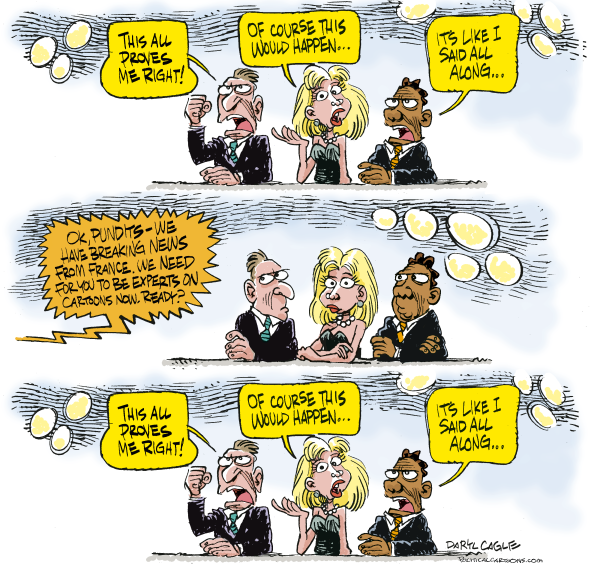 Yes, it has been more than a week since I have drawn a new cartoon. There’s too much on my plate, sorry; I’m trying to keep up. Here are some recent miscellaneous items.
Yes, it has been more than a week since I have drawn a new cartoon. There’s too much on my plate, sorry; I’m trying to keep up. Here are some recent miscellaneous items.
My cartoonist-journalist daughter, Susie, posted this excellent column about Facebook and other tech companies and their hypocritical “support” for cartoonists and press freedom issues.
I just read that the national cartoon museum in Belgium cancelled their Charlie Hebdo tribute exhibit at the last minute, after it had already been installed and before it was open to the public, because of security concerns. That is sad.


Want to read my Charlie Hebdo column in French? Here it is.
My business phone call voice mails go to a voice recognition line where I get an email of the phone message in text. I thought I would share this one that just came in, for a taste of what my typical phone calls are like …
“Hi my name is XXX XXXXX. I’m not sure how far you guys go your political cartoons but here’s a couple of ideas present Obama sitting on the toilet reading the Koran with the US Constitution roll of toilet paper. President Obama on the golf course with a bunch of crucified Chris’s son-of-fair-fairway(?) in the stadium quote the Bible says just play through the only Christians or grant(?) a baby close to the dj(?) and he walking out the door is away-but(?) I had a busy going you-recipe(?) and have a little Obama has-members-because(?) because he’s leaving. So just some food for thought food for thought. Thanks.”

An update on our hacker attacks, they are continuing, but we have Cagle.com up and relatively stable. Every so often we’re still going down, or we have some odd tech problem that crops up, we appreciate your patience.
Below is a cartoon I drew a while ago that has found new life in social media recently, with the incessant drum banging from Fox News over terrorism recently. With the economy in good shape I expect that fear mongering over terrorism and ISIS will dominate the upcoming Republican presidential primary fight.
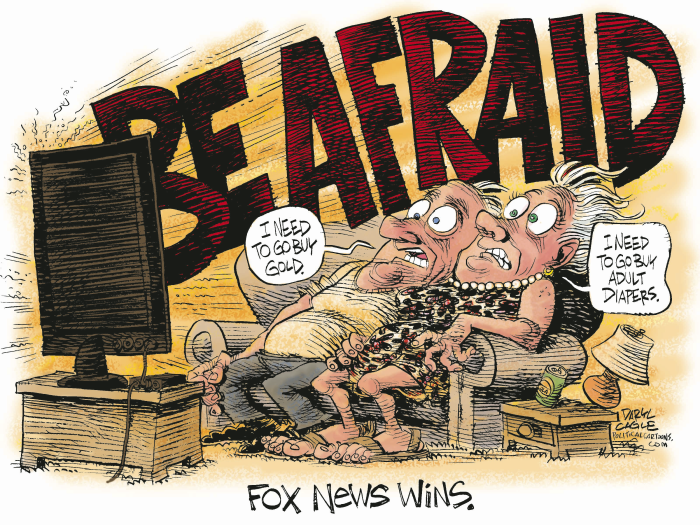
















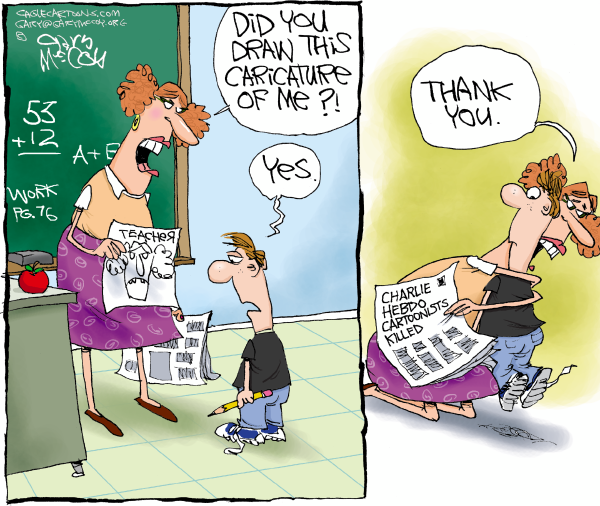



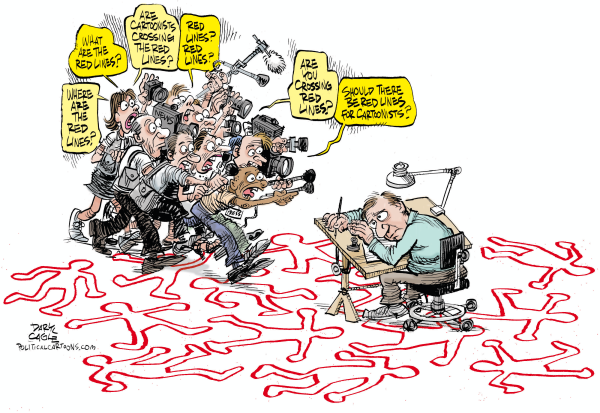
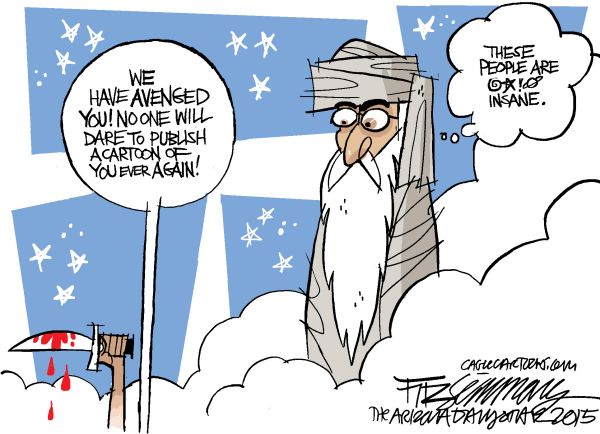 Yesterday, one of the cartoonists I syndicate, David Fitzsimmons of The Arizona Daily Star in Tucson, drew a cartoon depicting the Prophet Muhammad that we delivered to our 850 subscribing newspapers. Editorial cartoons depicting the Prophet Muhammad are not unusual. We were flooded with calls from editors questioning our wisdom in posting the cartoon, and asking if other editors were running it before deciding to run it themselves.
Yesterday, one of the cartoonists I syndicate, David Fitzsimmons of The Arizona Daily Star in Tucson, drew a cartoon depicting the Prophet Muhammad that we delivered to our 850 subscribing newspapers. Editorial cartoons depicting the Prophet Muhammad are not unusual. We were flooded with calls from editors questioning our wisdom in posting the cartoon, and asking if other editors were running it before deciding to run it themselves.